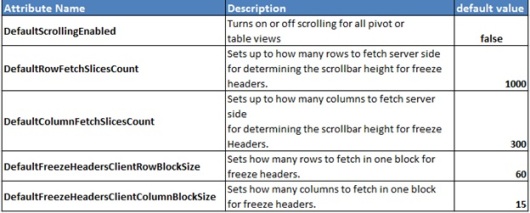Write Back Implimentation on OBIEE 11g Step by Step
I have seen several posts for writeback implementation on OBIEE 11g. Here am providing step for write back implementation.
Import Policy_details table into RPD and create Alias for it and join each other using Policy_Id key column
Uncheck the cacheable option --> physical layer -RPD table(Policy_details)
Make write able on necessary columns in BMM Layer(Double click on column) like below.
Make sure table permission read and write radio button in presentation Layer.
Double click on the table name in presentation layer(Policy_details) and then click on permissions and then choose Read/Write options for Authenticated User and BIAdministrator,Weblogic.
Note: Must choose Read/Write option for Bi Administrator,Web logic user as well.
And also Double click on the necessary columns and choose Read/Write options in Presentation Layer
Execute Direct DB request access give it required Application roles/users
Add writeback tag in instanconfig.xml file refer the below,
C:\OBIEE11G\instances\instance1\config\OracleBIPresentationServicesComponent\coreapplication_obips1\ instanceconfig.xml (please take a back and do the changes)
<LightWriteback>true</LightWriteback>
Restart all bi components by using OPMN command
Login to UI
http://satya:7001/analytics/saw.dll?PrivilegeAdmin
Manage Privileges --> grand permission likes below
Create Analysis
Enable Write Back check box on Policy_ID Column properties
It looks like
Edit the table properties and do the below
and save the changes.
Find the column id reference and note it finally you have to update on your Write Back.xml file
Go to edit analysis then Click on the advanced tab of the analysis
Here under the Analysis XML box we want to note down all the column Id's that we will be using to populate the Write back table with
Make a note of the column Ids for the required columns. These will be used in the WriteBack.xml file after update this you need to restart OPMN Services via opmnctl command
Or
We can use column positions also like @1 for column1 and so on
Create XML file as below and place it in
C:\OBIEE11G\instances\instance1\bifoundation\OracleBIPresentationServicesComponent\coreapplication_obips1\analyticsRes\customMessages
Note: Need to create custom Messages folder
file name : WriteBack.xml and kept it below paths
Note :This file name should match the Template Name in Table Properties
C:\OBIEE11G\instances\instance1\bifoundation\OracleBIPresentationServicesComponent\coreapplication_obips1\analyticsRes\customMessages\WriteBack.xml
C:\Oracle\Middleware\Oracle_BI1\bifoundation\web\msgdb\customMessages
<?xml version="1.0" encoding="utf-8" ?>
<WebMessageTables xmlns:sawm="com.siebel.analytics.web/message/v1">
<WebMessageTable lang="en-us" system="WriteBack" table="Messages">
<WebMessage name="satya">
<XML>
<writeBack connectionPool="Connection Pool">
<insert>SELECT NULL FROM DUAL</insert>
<update>UPDATE policy_details SET policy_id = @{c4c8d3c64f4ff47c7} WHERE LOB = '@{c1943e58ea9b2e36b}'</update>
</writeBack>
</XML>
</WebMessage>
</WebMessageTable>
</WebMessageTables>
restart bi components (if any changes on your xml file)
Verify modifying the data in policy_id column and then click on update will update the modified data into the Database
Note: similarly you can try for insertion/deletion write back comments
Hope this help's
Thanks,
Satya Ranki Reddy

















































